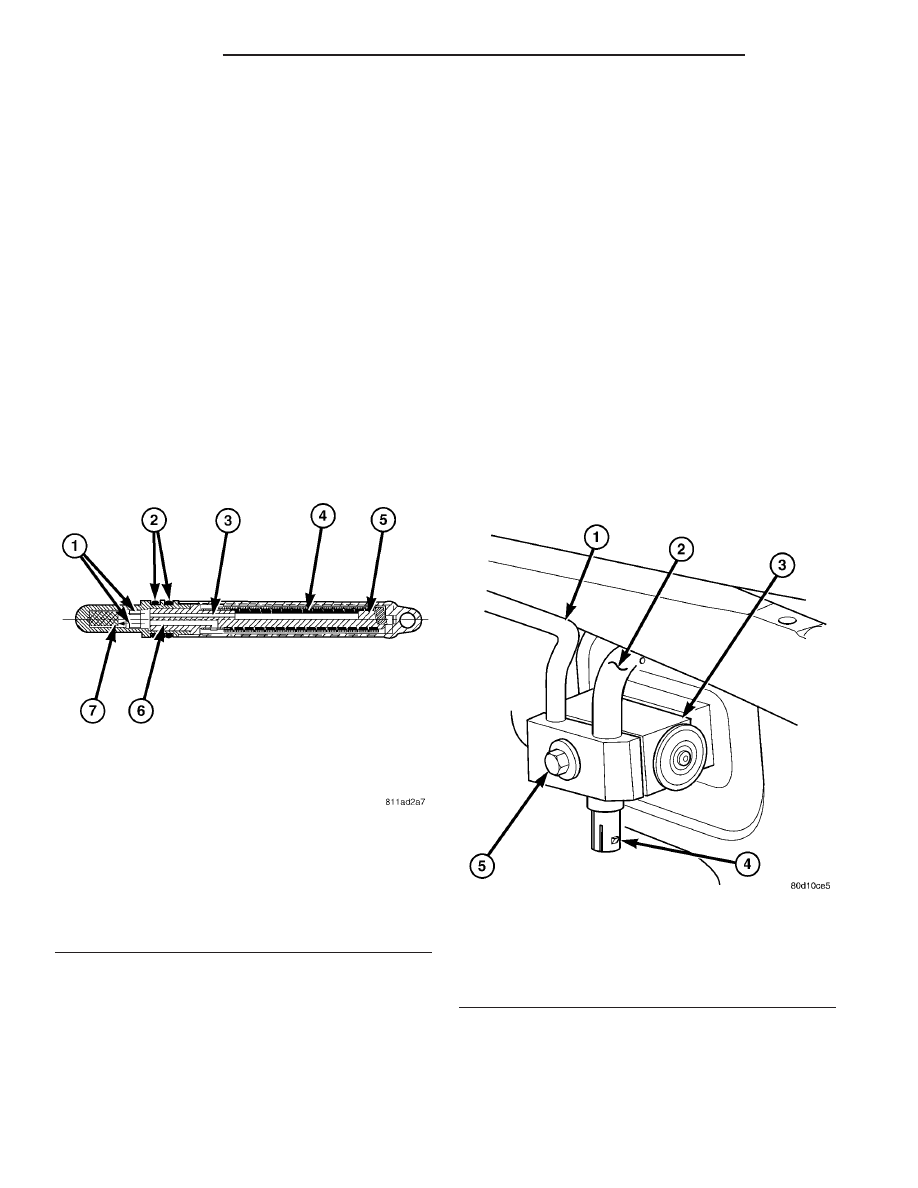Dodge Neon / Neon SRT-4. Manual - part 435

A/C VARIABLE ORIFICE TUBE -
2.0L LHD MODELS
DESCRIPTION
On 2.0L LHD models, a variable orifice valve
(VOV) is factory installed in the liquid line between
the outlet of the condenser and the inlet of the evap-
orator (Fig. 11). The VOV is located in the end of the
liquid line that is closest to the condenser. The inlet
end of the VOV has a nylon mesh filter screen, which
filters the refrigerant and helps to reduce the poten-
tial for blockage of the metering orifices by refriger-
ant system contaminants. The outlet end of the tube
has a nylon mesh diffuser screen. The O-rings on the
plastic body of the VOV seal the tube to the inside of
the liquid line and prevent refrigerant from bypass-
ing the metering orifices.
OPERATION
The variable orifice valve (VOV) is used to meter
the flow of liquid refrigerant into the evaporator coil.
The high-pressure liquid refrigerant from the con-
denser expands into a low-pressure liquid as it
passes through the metering orifices and diffuser
screen of the VOV. There are two parallel flow paths
integral to the VOV, a fixed port and a variable port.
As the temperature of the refrigerant increases, the
bimetal coil moves the variable port to the closed
position. High temperature results in more restric-
tion, and lower temperature results in less restric-
tion. This design improves A/C cooling at high loads
and or city traffic.
The VOV is not serviceable. It cannot be repaired,
and if faulty or plugged, it must be replaced as part
of the liquid line.
A/C EXPANSION VALVE - 2.4L
AND RHD MODELS
DESCRIPTION
An “H” valve-type thermal expansion valve (TXV)
is used on 2.4L and RHD models. The A/C expansion
valve is located at the dash panel between the liquid
and suction lines and the A/C evaporator (Fig. 12).
The A/C expansion valve consists of an aluminum
H-valve body with a thermal sensor and a fitting for
the A/C low pressure switch.
OPERATION
The A/C expansion valve controls the high-pres-
sure, low temperature liquid refrigerant from the liq-
uid line and converts it into a low-pressure, low-
temperature mixture of liquid and gas before it
Fig. 11 Variable Orifice Valve
1 - FIXED AND VARIABLE ORIFICES
2 - O-RINGS
3 - FIXED PORT
4 - BIMETAL COIL
5 - INLET FILTER SCREEN
6 - VARIABLE PORT
7 - DIFFUSER SCREEN
Fig. 12 Expansion Valve - 2.4L & RHD Models
1 - LIQUID LINE
2 - SUCTION LINE
3 - A/C EXPANSION VALVE
4 - A/C LOW PRESSURE SWITCH
5 - BOLT
24 - 48
PLUMBING
PL/SRT-4